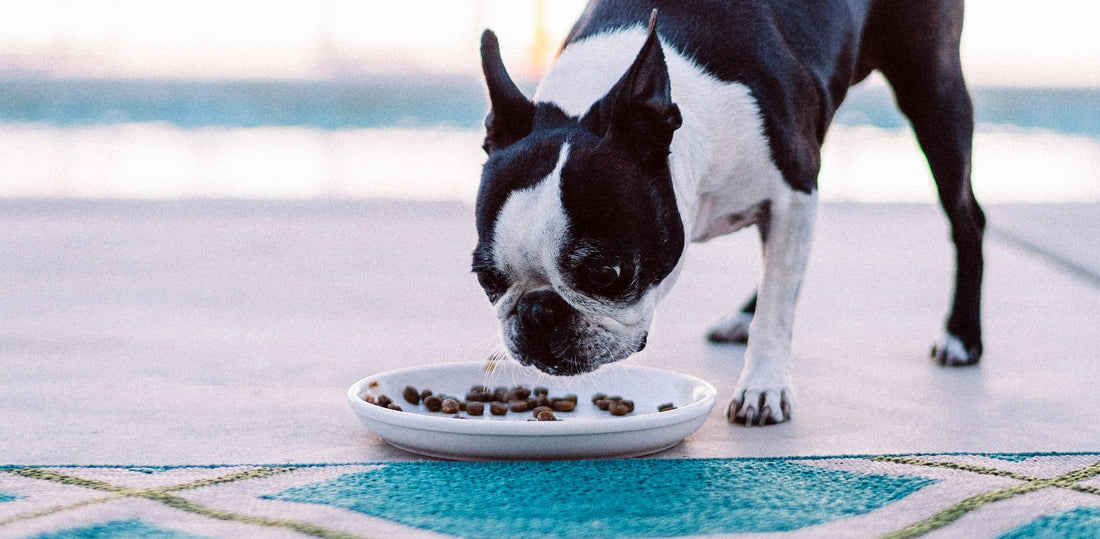
6 Secrets That Dog Food Companies Don’t Want You to Know
Share
The pet food industry is vast, and most commercial pet food companies know that your dog will happily consume almost anything you give him—even if it’s inedible! With so many different options when it comes to brands, treats, flavors, and foods, it’s easy for dog owners to pay less attention to ingredients, and more attention to what might be delicious and seemingly healthy for Fido. Who doesn’t love seeing their pup get excited for treats?
But the truth is, dog food companies are in constant competition with each other, trying not only to get your attention and business, but to manufacture as much of the product as possible at a lesser cost. The result? Consequences to your dog’s health and safety. Homescape Pets wants you to stay a smart consumer, so we’re going to let you in on what you may not know about your dog food and treats.

Here are 6 secrets that dog food companies don’t want you to know:
- Veterinary Endorsements May Not Be That Valuable
Now, we would never encourage anyone not to trust their doctors or veterinarians. This isn't abut the trustworthiness of your vet at all. It's about you. You taking responsibility for the advocacy of your pets day to day health. Even vets can be caught unaware with the myriad brands and ingredients which change frequently. Specifically, nutrition is not your vet's focus. Your pet's acute care and various disease states are their priority.
But think about why you trust your veterinarian: because you know them, and they know what’s best for your pup! Many pet food companies will take advantage by using this tactic to gain your trust.
Seeing “Veterinarian Recommended” or “Formulated” or “Developed” on pet food and treat packages doesn’t mean you should make an uninformed decision to buy that product. Which veterinarians are doing the endorsing? Are they well-known and trustworthy? Take this rule of thumb from AAFCO (the Association of American Feed Control Officers): food companies should never have “Veterinarian Approved” written on their packaging since the true authority of “approval” lies with food laws.
- Their List of Ingredients Can Be Manipulated
If you’re already in the habit of reading your dog food and treat’s ingredient labels, good! But guess what? Many commercial pet brands know that you’re checking their lists, and will try to cut corners.
When you’re reading the labels, you’ll notice that ingredients are listed by content percentages. Some manufacturers will break up the content into different names so that it appears to have a lower content. For instance, you might see “25% rice gluten, 25% white rice,” etc. Those percentages total up to 50% or more of grains that your dog consumes. Not only that, but you should be cautious with labels to begin with—manufacturers won’t always include any language that will tell you about the quality of the listed ingredients. Protein percentages don’t always come from meat, since wheat flour or gluten can be enriched with protein.
- What it Takes to Preserve Dry Goods
Just like with packaged, store-bought human food, dog kibble was developed around the time of World War II for the preservation of resources. Before then, dog food was wet and came in cans, providing a lot more hydration to pets than they are getting today. During the war, when meat was limited and tin was needed for supplies, the pet food industry came up with dry food, resulting in serious health consequences: dehydration, kidney disease, and more.
How do these foods last on the shelves for so long? Preservatives. And as many of you already know, preservatives are known to possibly cause cancer. One of the preservatives used in dog food and treats will be listed just as BHA, which is butylated hydroxyanisole. The FDA deems BHA as safe in low doses, but this is still concerning considering that we feed our pets every day!
- The Sources of By-Products
Meat by-products are probably the most common ingredients found in commercial pet food and treats. What, exactly, are animal by-products and how are they derived? By-products are whatever is left from animal carcasses… even hooves, teeth, and feathers, that are then boiled and processed into powder for consumption.
What might shock you more are the possible sources of these carcasses: slaughterhouses, diseased and euthanized animals, and even roadkill. Yikes! In some of these cases, the latent chemicals from euthanasia and drugs for treating diseased animals remain in the meat used for this kibble. These drugs and chemicals weren't added as ingredients, they were simple already present so they obviously won't be listed.
- What Your Dog’s Nutritional Needs REALLY Are
Dogs’ DNA is 99.9% identical to wolves and as such, they share the same nutritional needs. Their primary diet should include fresh, raw, or freeze-dried raw protein, fat, vitamins and minerals. Protein builds tissue, muscles, fur, skin, and hormones. Fat provides energy. Vitamins and minerals work to strengthen the immune system, bones, central nervous system, and the circulatory system. Carbohydrates have no place in your dog’s diet, yet most commercial dog foods are packed with them. Why? Because they’re cheap fillers. More real meat means higher costs and lower profits for them.
Check your bag of dog food and see how many carbs are in it and what they’re made of. The only carbs that are safe and should be fed to your dog are from fresh fruits and vegetables. Read more about the fresh veggies and fruits we recommend here on our blog.
- The Sources of Rawhide
Speaking of animal by-products, there are a lot of misconceptions about rawhide chews! The first being that rawhide comes straight from beef when actually rawhide is a leather by-product, meaning most commonly rawhide chews went from the slaughterhouse to a leather treatment plant. The rawhides are treated with many toxic chemicals and bleached. Commercial rawhide chews are some of the most widely-purchased treats for dogs that involve many of the secrets we’ve listed above.
More and more pet parents are realizing that rawhide treats present choking hazards to their pets, but simply keeping an eye out may not be enough. The process of manufacturing rawhide chews involves toxic preservatives and other chemicals, like formaldehyde.
Still, at Homescape Pets we can’t deny how irresistible treats and chews are to pups. Every dog deserves a satisfying and nutritious chew to keep him busy and healthy, which is why we formulated our new Homescape Pets Simply Natural Chews to be the perfect alternative to rawhide. We offer beef hide rolls. Immediately you will notice their natural color. The difference is ours did come straight from the slaughterhouse. They are sun dried, sometimes for months to get them pup ready. No chemicals, preservative or treatments of any kind.
Made only with real, raw meat, our treats and chews are air-dried, fully digestible, and excellent for joint health and clean teeth. Even better, they’re made with absolutely zero preservatives. Now, your pup can enjoy the real deal: protein snacks that are single-ingredient and absolutely delicious. Check out our chews and see which one your pup will love most!

1 comment
Great read. Thanks for posting!